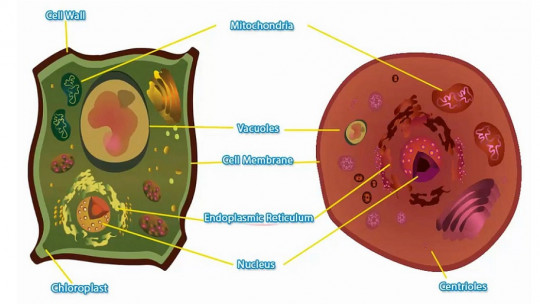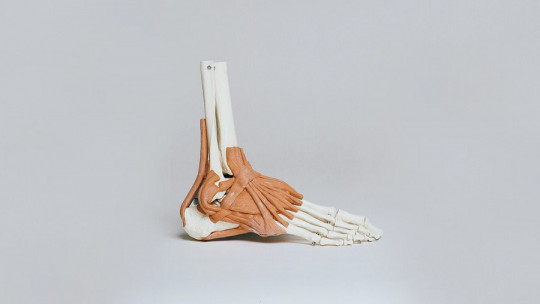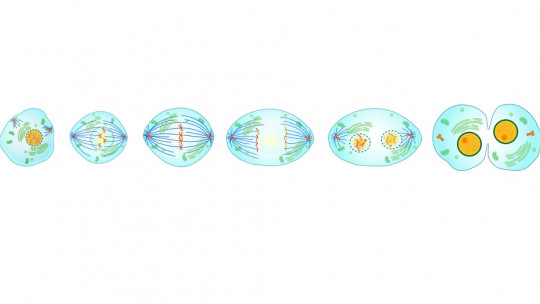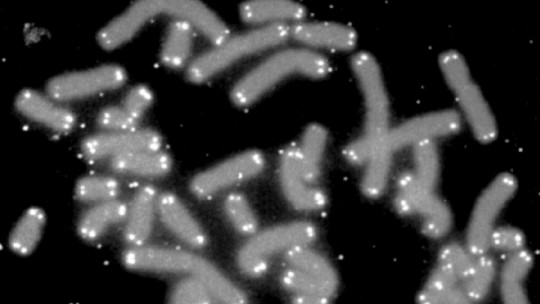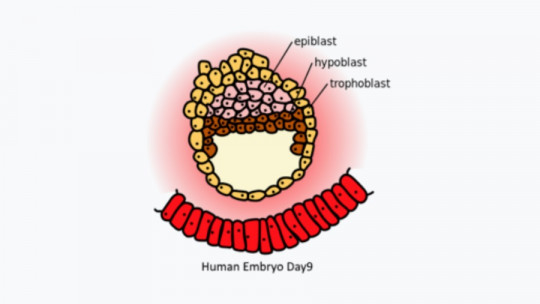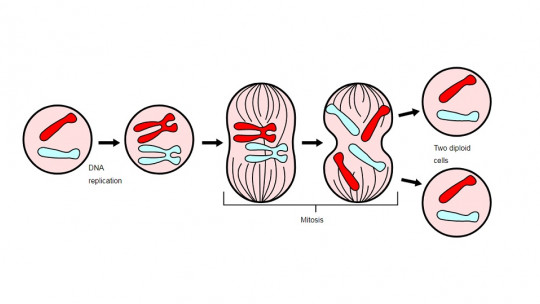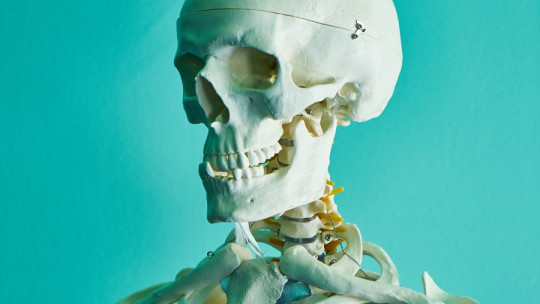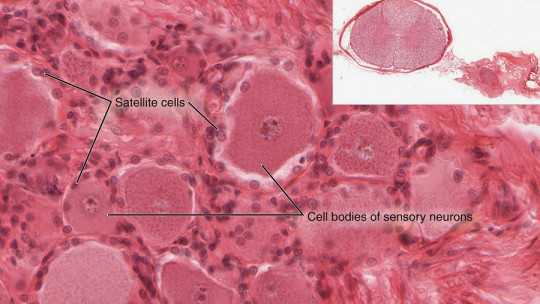
The cell is the functional anatomical unit of all living beings. For an organic entity to be considered living, it must have at least one cellular body. Based on this premise, we can describe all terrestrial biodiversity: from microorganisms as evolutionarily “simple” as bacteria (prokaryotes, a single cell) to the human being, with about 30 billion cells, divided according to their structure and functionality into different organs and systems.
The cells present in our body are divided into 2 large blocks: somatic and sexual. Somatic cells are those that form each and every one of the tissues in our body, characterized by their diploid nature (2 sets of chromosomes in the nucleus, one from the father and one from the mother) and their division by mitosis. While some cells form tissues that are in constant turnover, others are generated during development and do not regenerate again, as could be the case of the hair cells of the ear.
Thus, functionality and regenerative capacity are characteristics that allow us to group cells into different very heterogeneous blocks: neurons, adipocytes, hepatocytes, osteocytes, myocytes and a very long list. Even so, what would you think if we told you that there are cell groups within our body that are “nothing” and respond to the needs of the organism? In these lines we will see what they consist of satellite cells well we explain this crazy premise in the following lines.
What are satellite cells?
Satellite cells are a group of cell bodies that are undifferentiated, that is, they lack tissue specialization, like the majority of cells in our body In any case, these enigmatic structures can become, with the appropriate stimulus, a differentiated cell, in this case a muscle. These curious cell lines were discovered by biophysicist Alexander Mauro more than 50 years ago (1961), when he observed a group of undifferentiated mononucleated cells in the periphery of human skeletal muscle fibers.
The direct juxtaposition of the satellite cells with the muscle fibers immediately made this researcher think that they must have something to do with the repair and growth of muscle tissues. Indeed, satellite cells They are precursors of the cell bodies that form skeletal (voluntary) muscle, but they are also capable of adding additional nuclei to their parental cells s (remember that muscle fibers have several nuclei) and enter quiescent states when they are not necessary.
Before continuing with the fascinating world of satellite cells, we find it interesting to clarify a series of general terms about musculature, so that you can easily understand the lines to come. We didn’t linger long.
About muscle cells
The striated or skeletal muscle forms what we know as the muscular system, that is, the grouping of more than 600 muscles that we move voluntarily to perform movements, adopt postures, transmit gestural information And many other things. The basal cell of striated muscle tissue is the muscle fiber or skeletal myocyte, a multinucleated, cylindrical cell type with a marked contractile capacity.
More than ordinary cells, skeletal myocytes are actually syncytia, membrane-surrounded cytoplasms with a multitude of nuclei included. They have an atypical shape, since they are very elongated (several centimeters long) and, in addition, they are characterized by having a highly developed cytoskeleton, which allows the shortening of the cell and, therefore, the contraction of the muscles.
The nuclei of muscle fibers are located at the cell periphery, just below a membrane called the sarcolemma. The central content of these cell bodies is dominated by actin and myosin II filaments, in addition to many mitochondria, necessary for the production of energy that this tissue demands during contraction and relaxation movements.
Activation of satellite cells
The activation of satellite cells depends on the muscle niche, the surrounding microvasculature, and local inflammatory responses Some specific factors, such as liver growth factor (HGF), nitric oxide synthase (ONS) and fibroblast growth factors (FGF) seem to play an essential role in this process, but the exact mechanism behind this is not yet known. to the satellite cells to act.
On the other hand, There is some research that indicates that satellite cells are negatively regulated by a protein known as myostatin This myokine directly and indirectly inhibits muscle growth in humans, but, again, to establish inalienable causalities it is necessary to continue studying this enigmatic cell lineage.
The functioning of this type of cells
By definition, undifferentiated human cells (stem cells) must be capable of replicating themselves and, at the indicated time, giving rise to functionally differentiated progeny. Satellite cells meet both requirements, since They activate and begin to replicate when they receive signals from damaged surrounding tissue
After emerging from its quiescent state, this cell group begins to proliferate, through a process known as “satellite cell activation.” Furthermore, it should be noted that this reparative action is not limited only to the injured site: when the satellite cells in said section of the tissue are activated, others present in different parts of the myocyte are launched and migrate to the site, with the purpose of “healing.” ” as soon as possible the committed section.
In addition to dividing, There is evidence that shows that these cells are capable of fusing with existing structures, in order to facilitate growth and repair at the tissue level. In any case, it should be noted that this repair process is incomplete when extensive damage occurs and fibroblasts deposit scar tissue. If the function of satellite cells were 100% effective in all scenarios, muscular dystrophies would not exist.
Satellite cells and exercise
It is impossible not to wonder how all these mechanisms are linked to carrying out physical activities, since it is clear that various muscle groups can be damaged with a poorly performed exercise or a particularly unpleasant fall.
It has been postulated that exercise promotes the release of molecules of an inflammatory nature, cytokines and growth factors (such as the aforementioned HGF), which would activate the exit from quiescence of satellite cells and would encourage them to start working. While some specific factors are responsible for “awakening” the satellite cells, others that are equally essential will promote differentiation, but always with a specific purpose: to repair and improve the body’s muscles. Thus, carrying out physical activities itself would alert the satellite cells that they must prepare, in case something goes wrong.
Beyond this curious mechanism, Studies have shown that physical resistance training reports a greater number of satellite cells in the skeletal muscle of athletes This could be an excellent type of response to counteract the action of age, since it seems that the proportion of satellite cells available in our body also decreases with old age.
Summary
Everything presented here must be taken with a significant degree of critical thinking, since there is still a lot to know about these cell types and, therefore, attributing to them a series of miraculous properties would be a mistake. Everything seems to indicate that exercise and physical activity promote the expression and differentiation of satellite cells, but, of course, a serious injury always promotes the formation of scar tissue, which translates into a reduction in muscle functionality.
We emphasize an idea already mentioned previously: if the action of satellite cells were unequivocal and applicable in all scenarios, there would be no irreparable muscle injuries in the human body. In any case, this does not mean that they are useless: understanding their functionality and their activation routes can be a great tool for physiological and medical knowledge, as it could help us elucidate the particularities of certain pathologies of the locomotor system, today. practically unknown.

